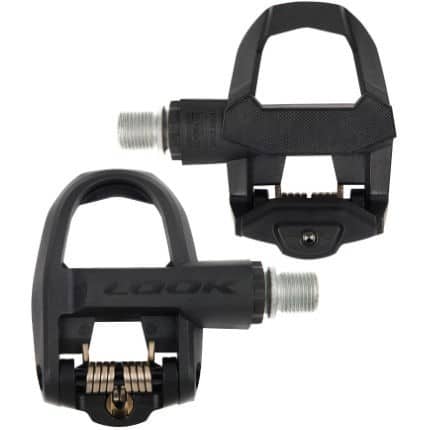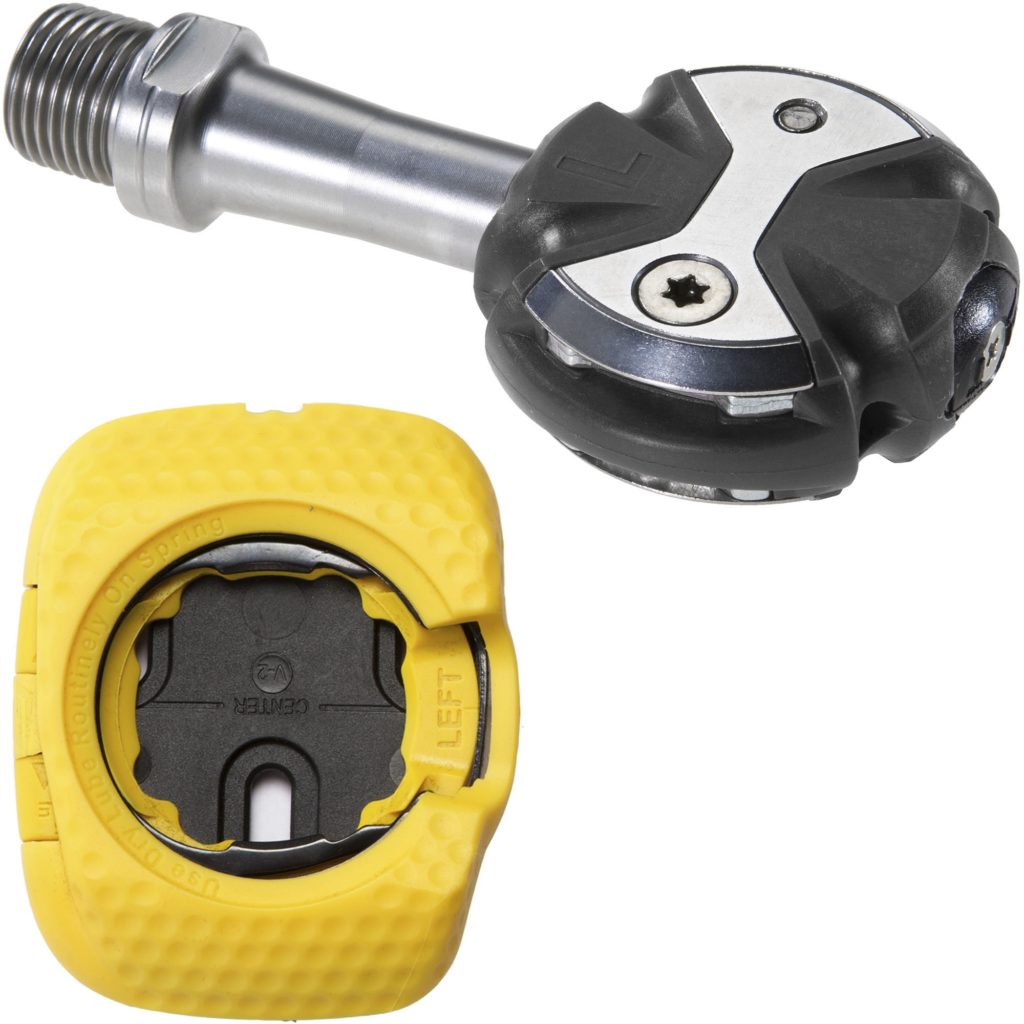Alongside the saddle and the handlebars, the pedals are one of the three points of contact of a rider and their bicycle. They also serve as the sole location for power transfer from a cyclist’s legs, so are one of the most important components to consider when setting up your bike.
Like many other bike parts, it can be difficult to discern what you should be looking for when choosing your pedals, what difference they can make, and which types of pedals are best suited for your needs. Pedal selection is one of the more personal component choices for your bicycle, and you will need to find the correct balance between comfort, versatility, and price; in addition to evaluating the potential performance benefits from different pedals.
For the uninitiated, the categorization of pedals can be perplexing: clipless pedals are those that you clip into, platform pedals are also known as flat pedals, and different brands use a range of mechanisms within their pedals. Here is a quick summary:
Within these two broad categories, there are several features that vary with each style of pedal that are designed to optimize them for use in a particular environment:
When deciding which pedals to opt for, it is necessary to understand what each type of pedal is used for and the design features that enable the pedals to suit their requirements.
As noted, platform pedals are the most common beginner pedal and will be suited to anyone who is new to riding or is a casual cyclist. They are also extremely useful in mountain bike riding and are the choice of most downhill and enduro cyclists. Their utility does not stop there, though, and it is not obligatory to ditch the platform pedals in order to feel like a proper cyclist. Platform pedals can also be ideal for those wanting to explore on their bikes. As bike-packing and cycling touring becomes increasingly popular, it makes sense to select a pedal that does not require specialized shoes, especially as cycling shoes can be quite difficult to walk around in.
SPD pedals are the most practical of the clipless pedals and are the most widely used. Appropriate for many disciplines, SPD pedals are perfectly suited for mountain biking and cyclocross. The metal pedals are more robust and durable than pedals made from other materials so are fit for riding among rocks, mud, and dirt. The material and shape of the cleats used with SPD pedals also permit more walking than other cleats, and therefore SPDs are frequently used for gravel riding and cycle touring.

These pedals are those which are commonly favoured by road and track cyclists, especially racing cyclists. Both types are based on similar mechanical designs and have almost identical shapes, optimized for power output, with a consideration of aerodynamics and weight. SPD-SL and Look are rarely used for mountain biking, cyclocross, or gravel riding but can be used for cycle touring.

There is a wide range of less ubiquitous pedals, including some mentioned here, and variations to adapt pedals for a different use. Notably, Speedplay pedals, used for all-terrain, are a top of the range brand that are the midpoint between SPD and road pedals, combining the light weight of road pedals and the shape of SPD pedals. Platform pedals can be made to approximate clipless pedals with the addition of toe straps – somewhat out of fashion in modern days but still favoured by track sprinters who are concerned about unclipping their feet due to extremely high output of power. Perhaps the most convenient variation is the combination SPD pedal, which features an SPD pedal on one side and a platform pedal on the other, allowing the rider to utilize the best features of both types of pedal. An additional variety, increasingly popular with avid cyclists and racers, is the power pedal, a pedal that comes equipped with a power meter for you to improve yourself and track your riding more precisely.

As expected, each pedal will have advantages and disadvantages, depending on its design and versatility. Here, we shall examine the pros and cons of the pedals we have discussed.
| Pros | Cons | |
| Platform | Cheap
Versatile, all-terrain appropriate Robust Use with any shoe Easy to remove foot from |
Lower power output – no pulling up
Lower stability Easier to slip foot off |
| SPD | Cheap
Versatile, all-terrain appropriate Durable, tough Dual-sided – fast clipping in |
Heavy
Smaller area – lower power output |
| SPD-SL, Look | Affordable
Lightweight Wide range of positions Stable once clipped in Variable float |
Only used for road and track
Cleats need replacing more often One-sided Hard to walk with compatible shoes |
| Speedplay | Lightweight
Variable float Easier to walk in Dual-sided |
Expensive
Smaller area – lower power output |
| Power pedal | Built-in power meter
Lightweight Stable once clipped in Variable float |
Expensive
Only used for road and track One-sided Hard to walk with compatible shoes |
So, how do you choose which pedals to go for? The biggest factor to consider when picking pedals is what you will be using them for. Platform pedals, while very versatile, are not the most practical for progressing in your road cycling. Most bike riders who choose to make the switch to clipless pedals will do so for increased control, comfort, or better power output. Since clipless pedals allow the rider to pull up on the pedals, in addition to pressing down, anyone who is considering competing in road racing will need to use clipless SPD-SL, Speedplay, Look, or another type of road pedal.
However, not everyone is trying to go as fast as they can. So, let’s look at what road riding you are doing and we can decide what will best suit you.
Whether you are just getting into road cycling, or you have been riding casually for a while, you probably won’t be looking to minimize weight at the cost of a carbon road pedal. To avoid having to frequently adjust and replace your cleats, it is preferable to opt for metal cleats – which are also easier for first time use as you will have no trouble clipping in and unclipping. Equally, if you aren’t interested in investing in a pair of cycling shoes, pedals, and cleats, platform pedals with regular tennis shoes will do just fine – and they are less likely to cause any knee pain from badly angled cleats.
Our choice: platform or SPD
If you are starting to ramp up your riding load, you will probably benefit from having the increased stability and comfort that can be achieved with making the switch to clipless pedals, but which ones to choose? SPD pedals are a good long-term investment, you will rarely have to buy new cleats, and your pedals are unlikely to suffer from wear and tear. Equally, you may well be interested in purchasing some sleeker, lighter pedals, more appropriate for road riding. The biggest decider should be how long you intend to spend wearing your cycling shoes off the bike: if you like to ride to a café and meet your buddies, SPDs will be ideal. If you spend just a little time walking in your cycling shoes, go for the SPD-SLs or Look.
Choice: SPD, SPD-SL, or Look
If you’re planning to start racing and training, pedals designed specifically for the road are a must. The weight difference is a key factor to consider when you’re trying to go as fast as you can, and the SPD-SL and Look pedals are cheap enough to justify the investment. For multidiscipline racers, you might contemplate buying Speedplay pedals, which are renowned for being lightweight and used across terrains, although they are significantly pricier than other pedals. If you are also searching for a power meter to improve your training, go for a set of power pedals.
Choice: SPD-SL, Look, or Speedplay
For riders spending hours traversing the country on their bikes – a set of SPD or SPD-SL pedals would seem like the ideal fit. If you stop often on your distance cycles and like to explore on foot, look no further than SPDs, hard-wearing and reliable, they can endure long days of riding. For those of you who like to do your rides with minimal stops, SPD-SL is a better option and much lighter to carry you over the hills.
Choice: SPD or SPD-SL
The adventurers among you will be looking more for comfort and durability than anything else. If you use your bike as a form of transportation, carrying you to a new location to explore, standard platform pedals may be the ideal option. There’s no need to lug around another pair of shoes or worry about your cleats eroding – just ride in any shoes. However, if your riding will take you over a more challenging parcours, you may well need all the extra power you can get: SPDs will give you that while not compromising on comfort and resilience.
Choice: platform or SPD
